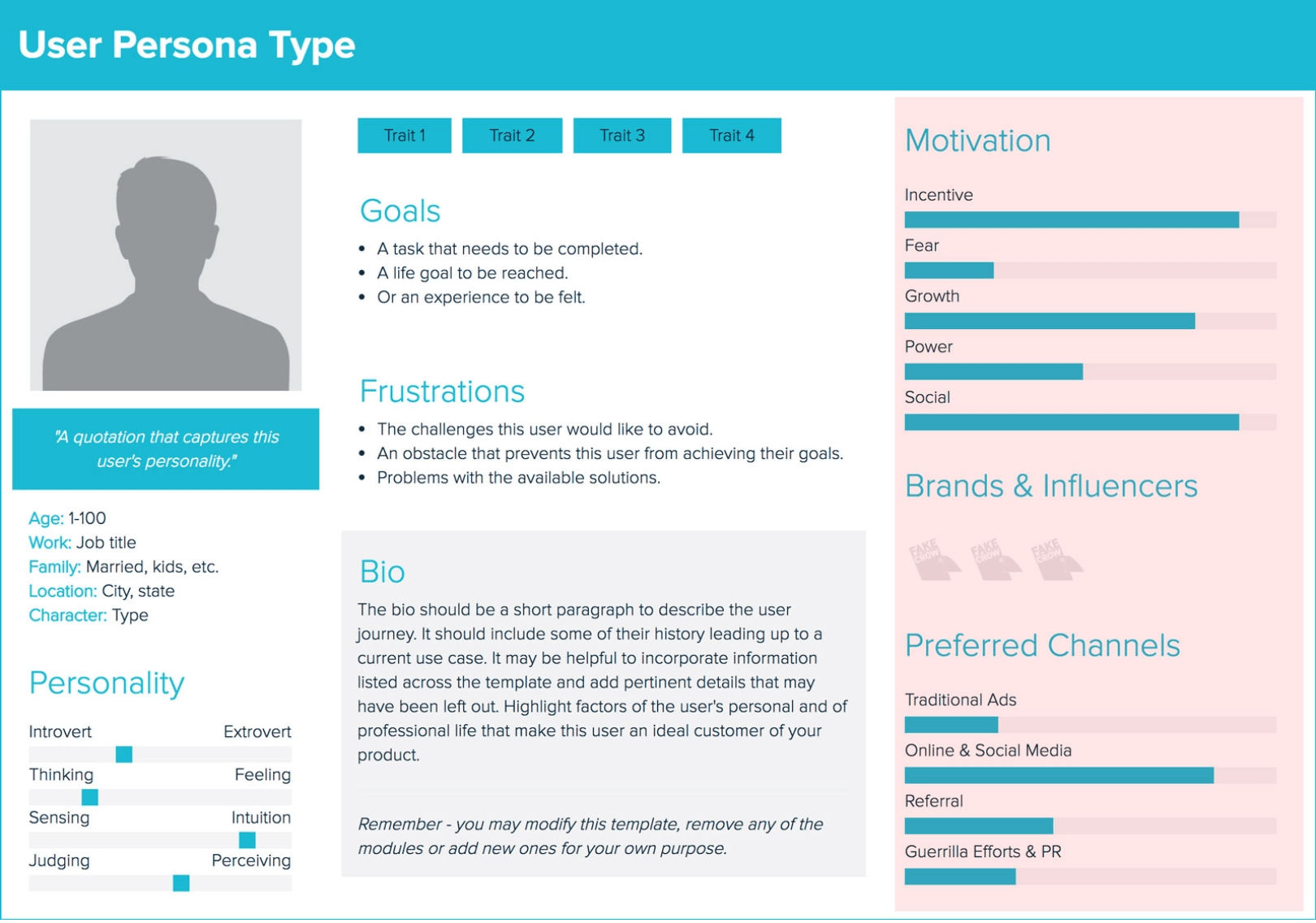In the first blog in this series, we learned about the importance of putting your audience needs first when it comes to choosing the right affiliate offers (third party products or services) to promote. The key takeaway was to know the characteristics of your audience so well, that you don’t have to “push” a product or service but rather, to create a “pull”, drawing them towards your offer by choosing to promote only what you know they’ll find valuable. Understanding who your audience is will help you find the right offers to solve their problems and keep them engaged in what you have to say.
In this post, we’ll show you how to put those audience insights to work by creating personalized messaging. You’ll learn how to increase your affiliate revenue by developing a communication strategy that speaks to your audience as the individuals that they are. By helping them understand the product you’re promoting in its entirety, and explaining exactly what it is that they’ll find useful, you’ll increase your conversion rates and gain the trust of your audience for the long run.
that speaks to your audience as the individuals that they are. By helping them understand the product you’re promoting in its entirety, and explaining exactly what it is that they’ll find useful, you’ll increase your conversion rates and gain the trust of your audience for the long run.
Remember these two golden rules:
- Only promote offers that you know will align with your audience interests.
- Try the product or service before endorsing it.
As the bridge between the advertiser (the brand whose product you’re promoting) and your audience, your job is to create a connection between the two parties. Your ability to convey the value of an offer is the most critical factor in your success as an affiliate marketer. But to do that, you need to understand both your audience and the advertiser’s product exceptionally well. Not only do you need to understand the components of the affiliate offer, but you need to map the value it serves to your unique audience. Doing so comes down to strategic messaging.
"Your ability to convey the value of an offer is the most critical factor in your success as an affiliate marketer."
Here are some tips to help you personalize your message and optimize your affiliate offers for success.
You might also like: How to Grow Your Affiliate Marketing Efforts Part One: Choosing the Right Affiliate Offers.
Personalize your message

We often refer to an ‘audience’ as a group of people who consume a publisher’s content. While that’s true, you’ll uncover exponentially more opportunities to convert your audience into customers by peeling back the layers. Speaking to them as individuals with personalized challenges, interests, and motivations will help you to serve them with the offers that resonate best. Communicating on a deeper level according to their unique characteristics can not only increase your conversion rates, but help you maintain a high level of user engagement.
Without targeted, relevant communications, you not only miss an opportunity to convert your affiliate offers, but you risk alienating those to whom the message isn’t relevant. When your content isn’t relevant, your audience will be quick to stop following you.
Within every audience, there are groups of individuals who share common attributes. Segmenting these groups can help an affiliate avoid the pitfalls of a one-size-fits-all message. Understanding what those common themes are and the differences in people's behaviour and expectations will enable you to craft messages that speak directly to the group of people it’s intended for. This is the process of segmentation.
Segmentation can be used as a tool to target unique groups within your audience with the offers that are best suited to them, and position it in a way that speaks specifically to why it’s right for them.
Develop a segmentation strategy

A segmentation strategy helps to make sense of your audience’s demographic, psychographic and geographic variants. Analyzing these segments allows you to develop key user personas to better position offers to.
User personas are incredibly useful marketing tools to help you characterize the key segments of your audience. In essence, a persona is a fictional character created to help you identify the unique traits of the individuals in your audience. Their utility lies in helping you craft your messaging in a particular way that leads to better engagement and higher conversion rates. Creating personas helps you speak directly to those audience segments.
to help you characterize the key segments of your audience. In essence, a persona is a fictional character created to help you identify the unique traits of the individuals in your audience. Their utility lies in helping you craft your messaging in a particular way that leads to better engagement and higher conversion rates. Creating personas helps you speak directly to those audience segments.
To create user personas, you need to examine who the key segments of your audience are , and then to build out a narrative about the traits they represent. Leaning on the insights you gained in part one of this blog series, you can develop hypotheses about your audience’s motivators and detractors.
, and then to build out a narrative about the traits they represent. Leaning on the insights you gained in part one of this blog series, you can develop hypotheses about your audience’s motivators and detractors.
Motivators are the attributes of an offer that would compel them to purchase, while detractors are those that would create hesitation. Mapping the pain points in your audience’s day-to-day life or business can also help you to understand what products will serve them best, and how you can communicate the value of each.
You can validate your hypotheses of each persona using the audience analytics reporting methods we covered in the previous post, doing user surveys, and conducting market research.
To help you conceptualize what this process can look like, let’s imagine the audience analysis in part one provided you with the following insights:
40 percent of your audience is interested in entrepreneurship. They follow you for inspiration to stay motivated and meet their own business goals. They like to see things like quotes and entrepreneurial success stories. We’ll personify this audience and call these people “Content Consumers”.
Let’s say you have another 30 percent who sell their expertise with services like consulting and freelancing. This group is most likely to read content you create about how to develop their social media following or grow their newsletter subscribers. Ultimately, what they want from you is to acquire a better understanding of how they can run their business. We’ll call this group of people, “Business Owners”.
The other 30% of your followers are new to entrepreneurship, or they want to expand their business with a new revenue stream. They follow you to watch webinars, demos, and how-to videos that help them start their own online business or launch a new store. Let’s call this group “Aspiring Entrepreneurs”.
These three groups represent your key segments. In other words, these are your core user personas. Understanding who these groups are enables you to provide them with the right offers, and to position them in the right context.
These user personas represent generalized profiles or archetypes of your core users. Doing this helps you conceptualize who you’re messaging and what type of offers will be best suited to their needs.
"Doing this helps you conceptualize who you’re messaging and what type of offers will be best suited to their needs."
You can make your user personas as detailed as you like, but the most important thing to capture is why someone would want a product or service, and what would prevent them from moving forward with an offer. For a more detailed development of your user personas, refer to this guide.

You can use the audience personas you’ve identified not only to position your offers, but to select them too.
Study the product you’re promoting
As an affiliate, you’re essentially an extension of the advertiser’s sales force. You need to know as much about their product as they do. Ask the advertiser for things like sales toolkits, product guides, information about their brand identity, and an explanation of their own user personas or target customers. Doing so will not only help you to better position the product to your audience, but to strengthen your partnership with the advertiser.
By investing time in this learning phase, you’ll also differentiate yourself as an integral partner in their affiliate program, keeping you top of mind for exclusive opportunities.
"As an affiliate, you’re essentially an extension of the advertiser’s sales force. You need to know as much about their product as they do."
Here are some questions to ask the advertiser to help you study the affiliate offer and better understand how to market it to your audience:
- Who is the brand’s target customer?
- What are their best selling products?
- Which calls to action generate the best conversion rates?
- What’s the length of their buyer journey? Ie. How long does it take for a new customer to make their first purchase from the first point of contact they have with the brand?
This last question will help you understand how hard it will be to convert your audience into customers for the brand you’re promoting. If the average buyer journey takes 45 days for example, and the advertiser is only giving you a 30 day cookie window, you know that your conversion rate will be too small to help them. If on the other hand, it takes only an average of 15 days for their audience to convert into buyers, then you can use that information to gauge the level of effort required to generate a sale for the advertiser.
Create targeted messages

With your personas developed and a clear understanding of the offers you’ll promote, your segmentation strategy is well under way. But to implement the strategy, you need to effectively message those segments of your audience in a way that appeals to them on an individual level.
It’s important to identify not only who you’re messaging to, but to select the communication channels where you can effectively reach them. Using the same persona examples from above, the “Content Consumer” may be interested in getting their inspiration from Instagram, while an “Aspiring Entrepreneur” may be looking to learn from your YouTube Channel. Understanding the user’s needs will help you identify where they see your messaging.
Step 1: Journey mapping
Identify where the user persona is in their journey to the brand you’re promoting. Have they ever heard of it? Will they be discovering it for the first time? Or do they just need more information to be able to make an informed decision? Remember that these hypotheses come down to having robust audience intelligence, which you can get with the use of qualitative and quantitative data.
Depending on where they are in their journey, create content that will move them down the purchase funnel. A purchase funnel is a marketing model used to visualize how close to purchase a user is. The top of the funnel represents the first touchpoint with the brand, called the ‘awareness phase’. Followed by this are the interest, desire, and action phases. Each represents a different phase of the user’s journey towards a purchase. Mapping where your user is helps you to understand the best way to tailor relevant messaging.

Image from The Beginner’s Guide to a Sales Funnel by Martin Zhel
Step 2: Offer positioning
If you’ll be introducing a product or service to your audience that they’ve never heard of, you’re targeting users in the awareness phase, and have your work cut out for you. You’re not just nudging someone to buy a product they were already aware of—you’re introducing something that you need to convince them they want or need. You’ll also be the one to educate them on the merits of that product, moving them from awareness to action.
For example, the Aspiring Entrepreneur may not have heard of the SaaS provider you’re promoting. However, based on their interest in developing a new revenue stream, you know that they’ll need an email provider. You can use that information as a starting place for your content. Explain what it is, why they need it, how they’ll use it, and where they can go to get started—to the brand you’re promoting.
You might also like: Why Building Infographics Should be Part of Your Content Marketing Strategy.
Step 3: Marketing messaging
Before crafting your promotional messaging, jot down bullet point responses to these questions:
- Why would your audience would want this product or service?
- How will you inspire them to use it? What challenge will it solve?
- Why are you recommending this product or service in particular?
Let’s say you’ve chosen an email SaaS product to promote to the Aspiring Entrepreneur. You know they’ll have some awareness of email platforms, but you don’t think they’ve moved into the interest phase yet.
Rather than create content that speaks to why they need an email platform for their business, you should instead spend time creating educational content in the form of a tutorial, webinar, guide, or course that will help them to understand their overall email marketing strategy.
Within that content, you’ll focus on an email provider that can help them to implement that marketing strategy. You’ll want to focus on why you recommend this email platform in particular, how it will helps address their problems, and why it adds value to their business. Better yet, you can even message the differentiators of this particular product as opposed to its competitors. This will help you to drive even more force behind your message and create an effective promotion.
Step 4: Testing
As with every marketing message, it’s important to test your audience’s receptivity to your strategy. You’ll want to make tweaks according to the learnings you gather from your audience and content marketing data. Create A/B or multivariate testing to determine which messaging techniques and offers work best with each segment.
Your audience will continue to evolve over time, so it’s important to remain receptive to your data. Adapting your personalization strategy will set you up for long term success, while creating tactful messaging will keep your audience engaged, helping you serve them with contextual offers. In turn, you’ll increase your conversion rates and become an integral partner to the advertiser whose products you choose to promote.
Read more
- How to Grow Your Affiliate Marketing Efforts: Develop an Audience-First Paid Media Strategy
- 25 Affiliate Resources You Can’t Miss
- Affiliates 101: What is the Shopify Affiliate Program and How Can You Successfully Apply
- How Christoph Filgertshofer Became Germany's 18-Year-Old Affiliate Marketing Wunderkind
- 5 Content Angles That Only Affiliates Can (and Should) Create
- New to Your Partner Dashboard: Powerful Affiliate Tools for Campaign Tracking
Are you creating personalized messaging for your audience? Let us know in the comments below!

